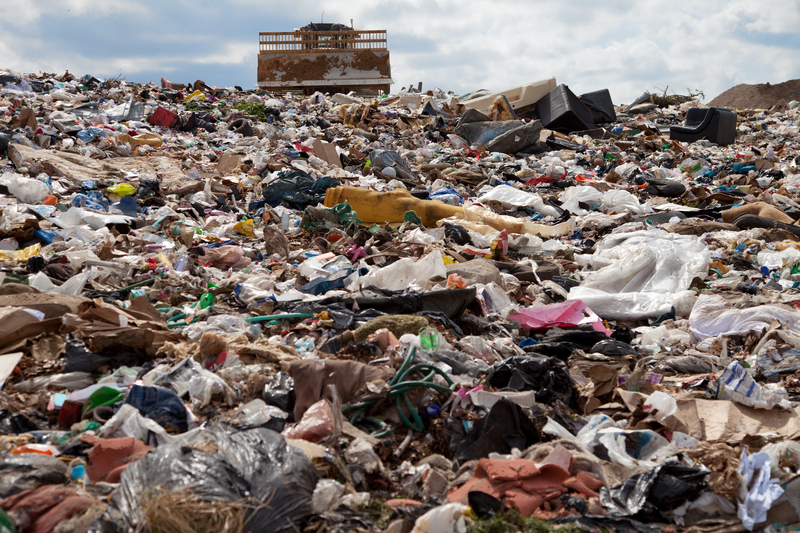These Plastics Could Be Hazardous: Avoid Them
Plastic materials have become an essential part of modern life, appearing in everything from food packaging to household goods and electronics. However, not all plastics are created equal. Many common types carry significant health and environmental hazards. Understanding which plastics to avoid -- and why -- is crucial for safeguarding your well-being and supporting a sustainable future.
Understanding the Risks: Which Plastics Are Potentially Dangerous?
Despite their convenience, certain plastics can leach toxic chemicals, contaminate our food, and pollute the environment for centuries. Some plastics are more prone to breaking down and releasing harmful substances, especially under heat, UV exposure, or stress. This article explores the main plastics you should avoid, the dangers associated with them, and safer alternatives for daily use.
How Plastics Are Categorized
Plastic products are often labeled with a recycling code -- a number within the familiar "chasing arrows" triangle. These numbers (known as Resin Identification Codes) range from #1 to #7 and indicate the type of plastic used. Understanding these codes helps you identify potentially hazardous plastics so you can make informed choices.
- #1 PET or PETE: Polyethylene Terephthalate
- #2 HDPE: High-Density Polyethylene
- #3 PVC: Polyvinyl Chloride
- #4 LDPE: Low-Density Polyethylene
- #5 PP: Polypropylene
- #6 PS: Polystyrene
- #7 Other: Miscellaneous plastics including polycarbonate, bioplastics, and others
Not all code numbers are equally dangerous, but some have been directly linked to serious health concerns and environmental issues. Let's dive deeper into the plastics you should specifically avoid.

Hazardous Plastics: The Worst Offenders
1. Polyvinyl Chloride (PVC) -- Recycling Code #3
PVC is one of the most widely used and hazardous plastics in the world. It's found in products like plumbing pipes, vinyl flooring, shower curtains, toys, imitation leather, and food packaging.
- PVC often contains phthalates, used as plasticizers to soften the material
- During manufacturing and breakdown, it releases vinyl chloride -- a known human carcinogen
- Dioxins -- highly toxic compounds -- are produced when PVC is burned or incinerated
- PVC cannot be recycled easily and is rarely accepted in curbside recycling programs
Health risks associated with PVC include:
- Disruption of the endocrine system (hormones)
- Increased risk of cancer
- Impaired development in children
- Asthma and respiratory issues
What to avoid: Stay clear of products with recycling code #3 and those marked as "vinyl." Especially avoid soft PVC products like shower curtains, kids' toys, and food wraps.
2. Polystyrene (PS) -- Recycling Code #6
Polystyrene, also known by the brand name Styrofoam, is commonly used for disposable cups, takeout containers, egg cartons, and packing peanuts.
- Contains styrene, a chemical linked to nervous system damage, cancer, and reproductive issues
- Can leach harmful chemicals when heated or in contact with acidic foods/drinks
- Extremely lightweight, easily breaks into microplastics, and persists in the environment for hundreds of years
Major hazards of polystyrene:
- Potential human carcinogen
- Developmental problems in children
- Contamination of marine and land environments, harming wildlife
To minimize your exposure: Avoid single-use foam cups, plates, and takeout packaging. Encourage local businesses to switch to compostable or paper-based alternatives.
3. Polycarbonate & Other #7 Plastics
Plastics labeled with code #7 (Other) are a catch-all category that includes polycarbonate, BPA-based plastics, and newer bioplastics.
- BPA (Bisphenol A) is a chemical often used in polycarbonate plastics (like hard, clear water bottles, sports bottles, and baby bottles)
- BPA has been found to disrupt hormones, impact fertility, and affect brain development in children
- Some alternatives to BPA, like BPS and BPF, may not be safer -- early studies suggest similar health risks
- #7 products can include recycled plastic blends with unknown properties
Children and pregnant women are especially vulnerable to the dangers of BPA and similar chemicals.
- BPA exposure has been linked to an increased risk of breast and prostate cancers
- Associated with heart disease and diabetes
Advice: Avoid hard, clear plastics with #7 on the bottom, especially if reused for drinks or baby items. Opt for BPA-free (and BPS/BPF-free) products and use stainless steel or glass whenever possible.
Other Plastics of Concern
Polyethylene Terephthalate (PET or PETE) -- #1
PET is very common and is used for single-use water bottles, soft drink bottles, and food packaging. While PET is considered safer than some plastics above, concerns can arise if bottles are o reused, heated, or exposed to sunlight.
- Can leach antimony and other chemicals over time or with heat
- Not intended for repeated use -- may harbor bacteria with reuse
Tip: Do not reuse single-use PET bottles. Always keep bottled drinks out of hot cars and direct sunlight.
High-Density Polyethylene (HDPE) -- #2, and Polypropylene (PP) -- #5
HDPE and PP are generally considered among the safer plastics, yet it's best to use them cold and avoid microwaving or heating. They are used for milk jugs, yogurt cups, and food containers.
*Want to err on the side of caution?* Choose glass, stainless steel, or ceramic containers for food storage and baby bottles.
Why Are These Hazardous Plastics Still in Use?
Despite growing awareness of their dangers, hazardous plastics like PVC, polystyrene, and polycarbonate remain widespread. There are several reasons for their continued use:
- They are cheap and versatile, making manufacturing costs lower
- Many industries lack immediate, affordable alternatives
- Public awareness and regulatory action continue to lag behind the science
- Recycling and waste management systems are not equipped to deal with all types of plastics
Ultimately, the only safe way to eliminate or reduce your exposure is to avoid hazardous plastics altogether and advocate for safer industry practices and stricter regulations.
How to Identify and Avoid Hazardous Plastic Products
Tips for Recognizing Harmful Plastics in Everyday Life
- Always check the recycling symbol and code on plastic products
- Products labeled #3 (PVC), #6 (Polystyrene), and #7 (Other polycarbonates etc.) pose the highest risks
- If the plastic is not labeled, look for clues like soft, flexible vinyl or hard, clear plastic
- Avoid cheap imported toys and kitchenware, which may not follow safety standards
- Be especially cautious with items for babies and children, food containers, and anything that will be heated
Better Alternatives to Hazardous Plastics
- Choose glass, stainless steel, or ceramic for food and drink storage
- Buy toys and household items made from wood, silicone (food-grade), or BPA-free plastics
- Support companies and brands using plant-based or bioplastic alternatives (look for compostable certification)
- Carry reusable shopping bags made from canvas, cotton, or recycled materials
- Encourage local stores and restaurants to phase out foam and PVC packaging
Environmental Impact: Hazardous Plastics and the Planet
Hazardous plastics aren't just a threat to human health -- they're devastating for the environment. Here's how they cause harm on a global scale:
- PVC and polystyrene are almost impossible to recycle. They end up in landfills and incinerators, releasing toxic chemicals for decades.
- Microplastics from degraded polystyrene and PVC infiltrate waterways, soil, and marine food chains.
- Toxins released by these plastics disrupt ecosystems, animal health, and food safety.
- Plastic pollution is now found in the most remote regions -- from ocean trenches to Arctic ice.
Switching to safer materials has a ripple effect:
- Reduces environmental pollution
- Decreases wildlife mortality from ingestion or entanglement
- Lowers your personal "plastic footprint"

Steps You Can Take to Protect Your Health and the Planet
Practical Actions for Individuals and Families
- Phase out hazardous plastics by switching to glass or stainless steel water bottles, containers, and utensils
- Never microwave food in plastic, especially codes #3, #6, or #7
- Avoid buying products packaged in flexible vinyl, polystyrene foam, or hard clear plastics
- Encourage your workplace or school to adopt plastic-free policies
- Educate family and friends about the risks associated with dangerous plastics
How to Support Positive Change
- Contact local governments to advocate for bans on PVC, polystyrene, and single-use plastics
- Choose to invest in companies and brands that use sustainable, safe materials
- Participate in community clean-up efforts to help remove dangerous plastics from local environments
Conclusion: Make Smart Choices to Avoid Hazardous Plastics
When it comes to plastics, not all are created equal -- and some present real dangers to your health and the planet. By learning to identify and avoid hazardous plastics such as PVC, polystyrene, and certain #7 plastics, you take an important step toward protecting yourself, your family, and future generations.
Switching to safer, sustainable materials isn't always easy, but every small change counts. Support businesses, policies, and innovations that help move us all away from toxic plastic dependency.
Remember: The less hazardous plastic you use, the healthier you and the planet will be. Choose wisely and encourage others to do the same!
Summary: Plastics to Avoid for a Healthier Life
- PVC (#3) -- used in pipes, toys, and food wraps; highly toxic
- Polystyrene (#6) -- foam cups, takeout containers, packing materials; leaches harmful chemicals
- Polycarbonate (#7) -- hard clear plastics, water bottles, baby bottles; BPA hazard
- PET (#1) (when reused or heated) -- single-use bottles may leach chemicals
Make safer selections: Look for the recycling codes, ask questions, and spread the word about avoiding dangerous plastics. Your choices make a difference!